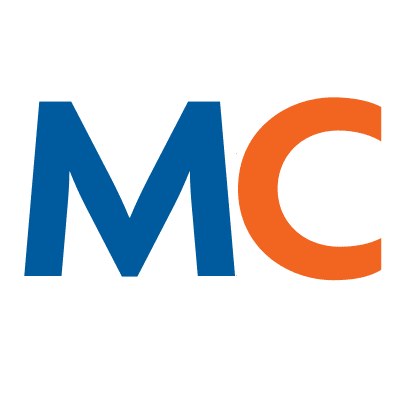- Solutions
- Solutions
- Home Health
- Hospice
- Life Plan Community
- Palliative Care
- Private Duty
- Senior Living
- Skilled Nursing
- Skilled Nursing
- Skilled Nursing Software
- Advanced Insights
- Customer relationship management
- Data and analytics
- Financial & operations management
- Marketing
- Nutrition management
- Referral management
- Regulatory compliance
- Retail management
- Resident engagement
- Revenue cycle management
- Skilled nursing interoperability
- Partners
- Blogs
- Resources
- About
- User Conference

Navigating Medicare TPE: Safeguard your revenue with supportive RCM solutions
With Medicare Targeted Probe and Educate (TPE) in full swing, it’s important for home health and hospice organizations to learn how to safeguard their revenue with supportive revenue cycle management (RCM) tools.
In this blog, we explore the pillars of Medicare TPE, the role RCM tools can play in safeguarding against TPE audits, and proactive measures to protect your organization’s financial health.
What is TPE?
Established in 2017 as a Centers for Medicare and Medicaid Services (CMS) compliance program, TPE is a medical review process used by Medicare Administrative Contractors (MACs) to help providers reduce claim denials and appeals through one-on-one education.
The pillars of TPE:
- Target: Errors identified through data analysis and peer comparison as potential risks to the Medicare program.
- Probe: The review of 20 to 40 claims — these claim sizes are intended to allow MACs to review enough claims to be representative of provider behavior, while not being overly burdensome.
- Educate: 1:1 individualized sessions between MACs and providers to help reduce claim denials and appeals.
How does the TPE process work?
Each MAC studies the claim data that’s submitted from each of the providers to determine which providers have high potential for claim error rates or unusual billing patterns. In addition, the MACs are identifying trends for services that impose high financial risk to Medicare, and they also target the newer providers as well. If you’ve had denials from Additional Documentation Requests (ADRs) in the past and it’s higher than normal, then you are at higher risk of being selected for the TPE program.
MACs use any data available to them, such as reports that CMS or other government agencies and contractors produce (e.g., the PEPPER report), then comparing that data on state, national and even jurisdiction levels. This means you can be triggered for a TPE based off the data review. You will then get a letter with an explanation of the process.
20 to 40 claims will be probed using the additional documentation request or ADRs. You will have 30 days to review the charts and provide a response, and that denial percentage is then calculated. If you’re below the max acceptable percentage or compliant, TPE is discontinued for at least 12 months, unless they see significant changes. If not compliant, that’s when you progress into the next round.
After education occurs, you have 45 calendar days to implement improvements, and then that process starts again. If you fail three rounds, you could be referred to the Office of the Inspector General (OIG) or CMS — potentially even facing a Unified Program Integrity Contractor (UPIC) or a Supplemental Medical Review Contractor (SMRC) audit.
What is the role of RCM tools in safeguarding against TPE audits and enhancing overall compliance?
With the right RCM tools, organizations can gain workflow efficiencies to help eliminate administrative hours that are needed to navigate Medicare FISS/DDE. They can also expediate Medicare claims processing, helping to ensure you’re getting paid the first time — and not having to retouch the claim.
Beyond efficiencies and claims processing, RCM tools can also prepare organizations for system audits and appeals by managing esMD, esDR, RAC, and other ADRs.
The role of RCM ultimately leads to improved, more informed decision-making through analytical dashboards on key metrics as well as drill-down mining capabilities.
What proactive measures can protect your organization’s financial health?
When dealing with high Medicare rejection rates, there are steps your organization can take to mitigate risks. Here are some best practices for staying proactive:
Start by reviewing your denials by category and top 10 payor denials.
Track denied dollars and denied claims by looking at 6-month trends to see what’s moving in the right or wrong direction. Drill down on the root cause of the denied claims and trends by looking at the payor scorecards.
Determine issues by payor.
Are you seeing trends for a particular payor that dramatically out-scale the rest? Look at the rules for every single payor that is being billed out and create a snapshot of how you’re performing against each one by drilling down into the denial reason codes.
Look at denials by biller to see if there are any outliers.
If a certain biller has more denials than others, maybe that biller needs additional training. There could also be old rules in the system that need to be updated or removed.
When considering the best RCM tools for your organization, remember that data should show what is being billed, how you are performing, and whether you’re going in the right direction. This will ultimately help navigate the complexities of Medicare TPE and safeguard your revenue.
Connect with us today to learn more about MatrixCare’s revenue cycle management solutions.
Rachael Feeback
Rachael is an accomplished accountant with over 15 years of experience in the healthcare and software industries. She started her career as an Accounting Manager on the Provider side and later specialized in EMR healthcare technology services, driving process improvements for home health and hospices. Rachael’s passion for healthcare lies in her commitment to taking care of the smallest details, enabling care teams to provide exceptional patient care. She has a track record of leading high-profile clients with compassion and expertise. Rachael holds a Bachelor of Arts in Accounting with a minor in Global Studies from Drury University, Springfield, MO. She resides in Rogersville, MO, with her husband, Mark, and their daughter, Taellor.
Related Posts




See MatrixCare in action
Start by having a call with one of our experts to see our platform in action.
MatrixCare offers industry-leading software solutions. Thousands of facility-based and home-based care organizations trust us to help them improve efficiency and provide exceptional care.
© 2025 MatrixCare is a registered trademark of MatrixCare. All rights reserved.




